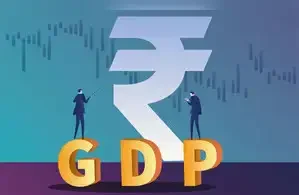India’s economic growth may fall short of the Reserve Bank of India’s (RBI) projection for FY26, according to the latest SBI Research Report. The report estimates GDP growth at 6.3% for 2025-26, slightly lower than the RBI’s forecast of 6.5%.
Q1 GDP Growth Seen at 6.8–7%
SBI Research expects first-quarter GDP growth between 6.8–7%, supported by resilient macroeconomic fundamentals. However, the pace of expansion is likely to moderate in subsequent quarters due to muted private capital expenditure (capex).
-
Q2 FY26: 6.5%
-
Q3 FY26: 6.3%
-
Q4 FY26: 6.1% (lowest for the year)
In comparison, the RBI projects Q1 growth at 6.5%, Q2 at 6.7%, Q3 at 6.6%, and Q4 at 6.3%.
Key Concerns: Weak Private Capex & US Tariffs
The report highlights that private sector investments remain subdued, based on a survey of 2,170 enterprises across agriculture, manufacturing, IT, and other sectors.
-
Capex intentions for FY26 are significantly lower than FY25.
-
US tariffs on Indian exports may further dampen investment sentiment and earnings.
-
Sectors at risk include textiles, gems & jewellery, leather, chemicals, agriculture, and auto components.
Public Capex as Growth Driver
On a positive note, SBI Research underlines that public capital expenditure remains a persistent and structural driver of growth. Government spending on infrastructure and development is expected to provide stability and cushion against global headwinds.
Banking Sector Trends: Credit Growth Slows, SME Loans Surge
India’s banking sector showed slower credit growth, slipping to 10% as of July 25, 2025, compared to 13.7% a year ago.
-
Aggregate deposits grew 10.2% YoY.
-
Credit growth weakened across most sectors except SMEs, where lending surged 21.8% YoY (up from 14.2% last year).
Outlook for FY26
India’s economy is expected to expand in the range of 6.3–6.8% in FY26, lower than the strong post-pandemic rebound of 9.2% seen in 2023-24. The SBI report concludes that while macroeconomic fundamentals remain strong, sustaining growth will require:
-
Strategic policy management
-
Boosting private investment
-
Managing risks from global trade tensions



